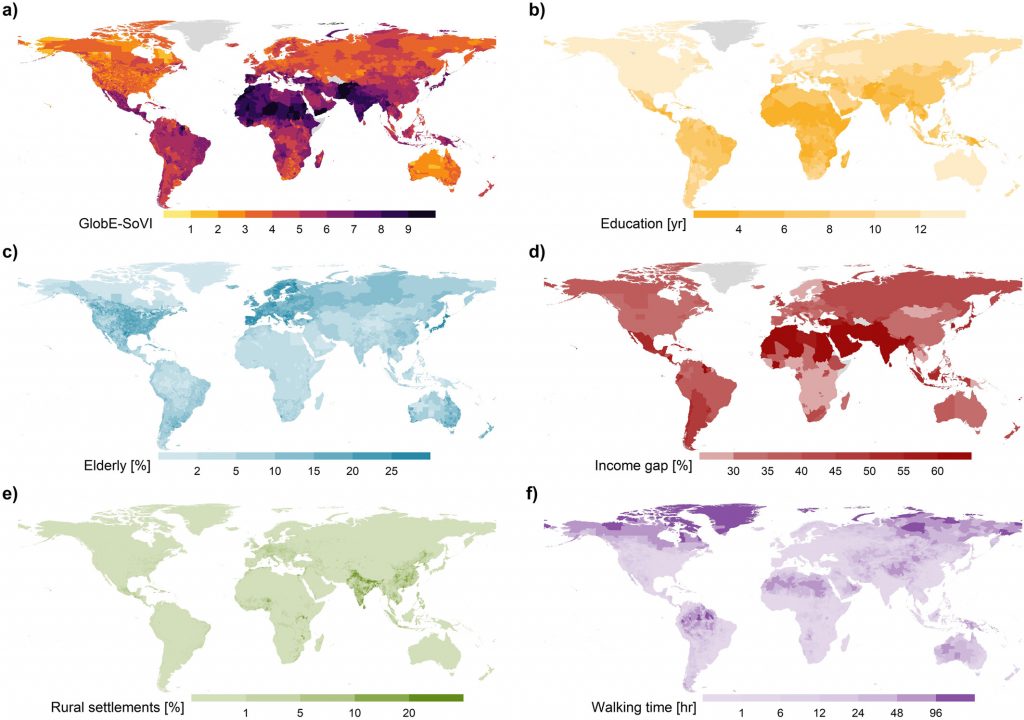Social vulnerability is rarely accounted for in global-scale risk assessments. However, integrating it in global-scale (flood) risk assessments can help inform global policy frameworks that aim to reduce risks posed by natural hazards and climate change as well as to foster more equitable development globally.
A recent study led by Lena Reimann from the Institute of Environmental Studies (IVM) at VU Amsterdam, published in Earth’s Future, has explored drivers of social vulnerability based on flood fatalities by past flooding events. The team from IVM and Deltares established five key drivers i.e. education, elderly, income inequality, rural settlements, and travel time to healthcare, which they combined into a global map of social vulnerability (“GlobE-SoVI”).
Globally, education has the highest relative contribution to vulnerability (roughly 58%), acting as a driver that reduces vulnerability; all other drivers increase vulnerability, with the gender income gap contributing ∼24% and the elderly another 11%.

The GlobE-SoVI maps are publicly available and can provide the basis for climate risk assessments that aim to integrate social vulnerability as a driver of risk. Within CLIMAAX, the data can provide valuable insights into social vulnerability hotspots across Europe, and can be further refined for regional- to local-scale studies.


